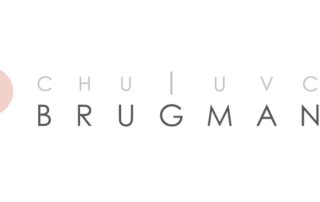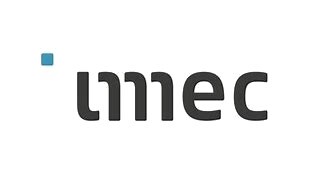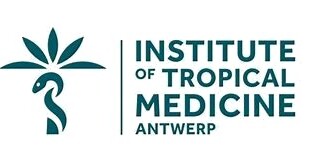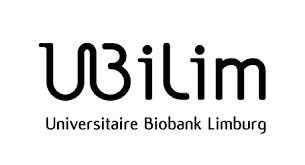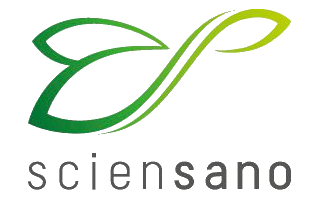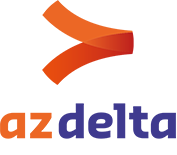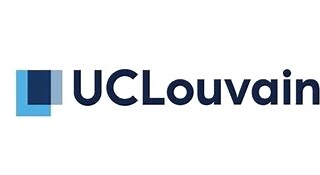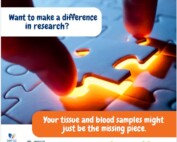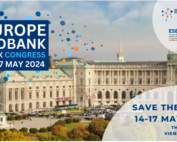From 2013-2019, BBMRI.be has matured into a solid partner network on biobanks in Belgium and has proven to reach out to a broader community beyond the founding partners. From 2019 onwards, BBMRI.be invites all Belgian biobanks with translational research potential to join the BBMRI.be network. Currently, our network connects 20 biobanks that are linked to public institutions such as hospitals, universities and research centers.
The BBMRI.be network connects 20 biobanks that are linked to public institutions such as hospitals, universities and research centers and welcomes all Belgian biobanks with translational research potential to join the BBMRI.be network.
If you are interested to join our network, then complete the registration form and we will get in touch with you soon!

Are you interested to join BBMRI.be?
BBMRI.be welcomes all Belgian biobanks with translational research potential to join the BBMRI.be network.
If you are interested to join our network, then complete the registration form and we will get in touch with you soon!
Have a look at our available collections!
Frequently asked questions
- 4.1.4 Information relevant to biobank activities, processes and procedures shall be documented in a comprehensible format. What does this actually mean? It’s very vague to me. Does this adress procedures we need to provide to our personnel members, or does it also concern communication to other stakeholders such as donors?
The biobank has to document all relevant processes and their interdependencies. (adapted from the German Quality Manual)
What is relevant are the critical biobanking activities, and that is something that the biobank can decide themselves. ISO20387 annex A needs to be implmented for the critical activities of the biobank, and annex B can provide guidance. - 4.1.5 The documentation shall include relevant information generated from procedures pertaining to the quality management system (see Clause 8) as well as the management of facilities/dedicated areas. What does this actually mean? It’s very vague to me.
Does this adress procedures we need to provide to our personnel members, or does it also concern communication to other stakeholders such as donors?
The biobank has to document all relevant processes and their interdependencies, including how you manage the rooms used in biobanking activities (adapted from the German Quality Manual)
What is relevant are the critical biobanking activities, and that is something that the biobank can decide themselves. ISO20387 annex A needs to be implmented for the critical activities of the biobank, and annex B can provide guidance. - 4.1.7 The biobank should document the identity of personnel performing activities encompassing procedures as referred to in 4.1.1 Is this applicable to all processes performed; should we register who’s handling the sample at each seperate step in the biobanking process?
The biobank has to document the tasks and responsibilities of internal staff and external users regarding all critical biobanking activities.
The instructions are binding for all biobank employees. The requirements for externally provided services also need to be described, but as the biobank doesn’t have them under direct control, the instructions are not binding for external personnel. (adapted from the German Quality Manual) - On page 32 an annex B: B.2 are listed: Acquisition, collection method, method of sampling.
What does method of sampling mean here? Is this the same as the ‘type of collection’ data field in SPREC? It’s also not entirely clear to me why this data field is improtant.
‘Specific properties’ is added to Annex A (A2g) because specific extra information can be relevant for specific sample types. It’s added there as a reminder: if there would be relevant info with regards to specific properties, then you need to record that info. - On page 32 an annex B: B.2 are listed: Acquisition, specific properties – infectiousness — biosafety information radioactivity/radiation – transgenic, chimera, genetically modified etc
Do we need to define this of each study where this is applicable? Are there other things to keep in mind that could fall in the categogy ‘specific properties’?
‘Specific properties’ is added to Annex A (A2g) because specific extra information can be relevant for specific sample types. It’s added there as a reminder: if there would be relevant info with regards to specific properties, then you need to record that info.
Acquisition, storage and distribution are all obligatory activities in the BELAC ISO20387 accreditation scope. Therefore it’s not possible to receive an ISO20387 accreditation if your biobank only includes storage in its accreditation scope, and excludes acquisition and distribution.
However, the activities of collection, preparation, testing and preservation are not obligatory activities in the BELAC ISO20387 accreditation scope. Your biobank can still apply for ISO20387 accrediation when it excludes one or more of these activities from their accreditation scope.
ISO TC212 (Clinical laboratory and IVD test systems) published Technical Specifications for pre-examination processes for a broad range of matrices and uses.
The most recent versions can be found at https://www.iso.org/committee/54916/x/catalogue/p/1/u/0/w/0/d/0.
Documents still under development are listed at https://www.iso.org/committee/54916/x/catalogue/p/0/u/1/w/0/d/0
These are two separate tools
The BBMRI-ERIC Self-Assessment Survey (SAS) is developed by BBMRI-ERIC. This tool is available to members of BBMRI-ERIC for free, and non BBMRI-ERIC members can take if after paying a fee. It is developed to check how biobanks are performing regarding the ISO norms. This is the questionnaire that is used in the B3-ISO project and addressed in a B3-ISO webinar.
The ISBER BAT (Biobank Assessment Tool) is a questionnaire developed by the International Society for Biological and Environmental Repositories (ISBER) and allows a biobanks to check how they are performing regarding the ISBER Best Practices. Next to that, it provides some high-level references to applicable ISO20387 clauses, but not all content from ISO20387 is covered by the questions of this survey. Along with the certificate and the score in %, you get a report that can be imported in excel for further use. More info can be found at https://www.isber.org/general/custom.asp?page=BAT. This tool is not related to the B3-ISO project.
It’s up to the biobank to define the scope of their activities and quality objectives. If you exclude certain activities or collections out of your scope of accreditation, you cannot declare that your accreditation certificate is applicable to those activities or collections.
This could be, and you could do a validation study for this. We refer to the following sources:
Review on long-term storage temperatures: https://www.liebertpub.com/doi/10.1089/bio.2013.0084
Lukasz Kozera BBMRI-ERIC webinar series on pre-analytical quality: https://www.bbmri-eric.eu/services/e-learning/
BBMRI.de white paper: https://www.bbmri.de/fileadmin/user_upload/PDFs/GBN_Recommendations_Energy_Saving_-80-ULT_Nov2022.pdf
Biobanks don’t have to use a quality manual, SOPS or WDs. They can structure their documented information as is most convenient for them. When they wish to attain ISO20387 accreditation, this needs to be conform the requirements.
General requirements clauses address is a very broad way all aspects of biobank management and activities, such as the general principles of quality documentation, impartiality and confidentiality.
Structural requirements clauses address high-level management aspects such as description of the organizational context, definition of the scope of the quality management system & quality policy, and description of leadership, roles and authorities.
ISO defines uses specific language to address this. (see https://www.iso.org/foreword-supplementary-information.html)
“shall” indicates a requirement
“should” indicates a recommendation
“may” is used to indicate that something is permitted
“can” is used to indicate that something is possible, for example, that an organization or individual is able to do something
Requirements and recommendations are defined as follows (ISO/IEC Directives, Part 2, 2021, 3.3.3-3.3.4) :
A requirement is an “expression, in the content of a document, that conveys objectively verifiable criteria to be fulfilled and from which no deviation is permitted if conformance with the document is to be claimed.”
A recommendation is an “expression, in the content of a document, that conveys a suggested possible choice or course of action deemed to be particularly suitable without necessarily mentioning or excluding others.”
All BELAC prices are published in BELAC 7-01: BELAC: General and practical information (https://economie.fgov.be/en/publication/series-belac-7-xx-information).
Dossier cost: non-recurrent, to be payed upon submission of accreditation-request
Yearly fee during accreditation
Audits: rate is calculated per hour. The price will depend on the scope and the type of audit.
Estimation for pre-assessment: 17 hours
Estimation for initial audit with limited scope: 54 hours in case of 1 main auditor & 1 technical auditor.
To have your biobank recognized under the Belgian leglisation (RD2018, updatedRD2022) , you need to follow the next steps:
- Approval of the activities and objectives of your biobank by a fully recognised Ethics Committee
- BAREC has developed in collaboration with BBMRI.be a template that can faciltate the initial EC submission of your biobank: EC submission form for biobanks
- Registration of your biobank with FAMPH
- By using this form (NL/FR):
- Each two years, a biennual report needs to be submitted to the Ethics Committee
- BAREC has developed in collaboration with BBMRI.be a template that can faciltate this biennual evaluation: EC submission form for biobanks _ biennial evaluation
BBMRI.be also organized, in the framework of the B3-ISO project, a webinar that covers all ethical/legal aspects you need to take into account when setting up your biobank.
The slides of this meeting can be found here: ELSI Webinar. A recording of this meeting is availalble upon request (contact us below)
More information on the Belgian biobank legislation as wel as a comprehensive FAQ (Compendium) about this legislation can be found on the website of the FAMHP:
– Instellingen voor menselijk lichaamsmateriaal | FAGG (NL) / Etablissements de matériel corporel humain | AFMPS (FR)
– Compendium_20072018.pdf (fagg.be) (NL/FR/ENG)
The compendium document is currently being updated in accordance with the update of the Royal Decree in 2022.
Would you rather add your collections to an existing BBMRI.be biobank than setting up your own biobank?
Or do you have any other questions for our biobanks.
Then please contact us with the button below and we will get you into contact with the most suited biobank expert in our network.
- Go to https://negotiator.bbmri-eric.eu/login.xhtml
- Try to login through your home institution
- find your institution and log in
- if your institution is not available, try adding it and log in
- if both methods above do not work, register an account with “our Hostel” and log in
- Register with the list of collection IDs you are representing (see Directory)
- BBMRI-ERIC will review your registration and if OK, they approve it – and you are ready to go!
- Receive sample requests!
More detailed information about the Negotiator and a more detailed guide for the registration can be found with the following links:
BBMRI.be is currently developing a quality improvement program to support the biobanks in reaching the different levels of quality management.
Within this program, webinars are organized and templates developed to guide the biobanks.
More information on this project and the material developed can be found here: B3-ISO project
BBMRI-ERIC is also offering several training & support opportunities that are available for all biobanks of BBMRI.be.
You can find back more information on these opportunities here:
- Quality Management – BBMRI-ERIC: Making New Treatments Possible
- E-learning of BBMRI.QM Academy
- BBMRI.QM Training series on ISO 20387
- BBMRI.QM Training Series on technical specifications for molecular IVD diagnostic pre-examination processes
The Royal Decree of 9 January 2018 on biobanks, published in the Belgian Official Gazette on 05.02.2018 in implementation of Article 22 of the Law of 19 December 2008 regarding the procurement and use of human substances destined for human medical applications or for scientific research purposes, enters into force on 01.11.2018. The full text can be found here in Dutch & French: Belgian Biobank Law 2018
The Royal Decree on biobanks provides for:
- the procedure whereby the biobank should declare itself to the Federal Agency for Medicines and Health Products, as well as the content of the declaration file;
- rules relating to the harvesting of human substances intended for a biobank;
- the provisions relating to changes to and cessation of the biobank’s activities;
- the manner and frequency with which the biobank reports to the ethics committee and under what conditions the ethics committee can amend or withdraw its opinion;
- the data that the register held by the biobank should contain;
- the content of the agreement between the biobank and the recipient of the human substances;
- the procedures relating to donor encoding, traceability and identification.
In 2022, an update has been published, which can be found here: Belgian Biobank Law update- February 2022
In order to shed clarity as to how to interpret and implement the complex system of legal requirements, the Federal Agency for Medicines and Health Products (FAMHP) developed the Compendium. During the preparation of the Compendium, the input of relevant stakeholders was sought, namely representatives of academic and industrial biobanks, ethical committees and juridical experts. By providing answers to 47 consolidated questions, the document covers a broad range of topics such as, inter alia, the scope of the biobank legislation, consent, notification procedure, transformation of HBM, traceability and anonymization, ethics committees. The full document is available (in NL/FR/ENG) here: Compendium 2018 The Federal Agency for Medicines and Health Products (FAMHP) is currently working on an update of the Compendium in response to the updated Royal Decree published in 2022.
An Overview of Belgian Legislation Applicable to Biobank Research and Its Interplay with Data Protection Rules can also be found in this book chapter: Lalova et al, GDPR and biobanking, Law, Governance and Technology Series (ISBN 978-3-030-49388-2 (eBook)).
BBMRI.be also organized, in the framework of the B3-ISO project, a webinar that covers all ethical/legal aspects you need to take into account when setting up your biobank.
The slides of this meeting can be found here: ELSI Webinar. A recording of this meeting is availalble upon request (contact us via secretariat.BBMRIbe@kankerregister.org).
In 2022, BBMRI.be received funding through an ESFRI-FED call from BELSPO for the setup of a quality improvement program towards ISO 20387 accreditation for the biobanks (B3-ISO project). Within this project we develop & offer templates, webinars & guidance to biobanks that want to prepare for this accreditation.
More information about this project and the developed material can be found here
The available collections from all biobanks of BBMRI.be can be found in the BBMRI-BE Directory
The BBMRI.be Directory is a collection level catalog which gives you a glance of the material that is available at our biobanks and is freely available for all researchers.
In the Directory, you can filter the biobanks with your criteria. After the search, you can contact all biobanks of interest at once through the communication platform of BBMRI-ERIC (the Negotiator). The Negotiator substantially simplifies the communication steps that are necessary to obtain information on the availability of relevant samples/data, particularly if the researchers need to communicate with multiple candidate biobanks.
If you do not find the samples you are looking for in the BBMRI.be Directory, then go have look at the BBMRI-ERIC Directory, the biggest biobanking catalogue on the globe,w hich harbours all collections of BBMRI-ERIC.
The data in the Directory can be consulted on the homepage of the Directory by all users (no login is required).
More detailed information on the different options can be found in this document: Consult data in Directory – BBMRI.be
To update the data of your biobank in the Directory, you need to login (one login available per biobank). Contact us (secretariat.BBMRIbe@kankerregister.org) if you would need a login for your biobank.
Updates can be done either manually via “Advanced search” in the web application or by uploading an excel file via “Import Data”.
When using the “import data” option, make sure to start from the most recent data from your biobank.
A step-by-step guide for both update options can be found in this document: Update data in BBMRI.be Directory – BBMRI.be
If you need an excell export of your current data in the Directory as a starting point for your updates, please contact secretariat.BBMRIbe@kankerregister.org
In this document, you can find a manual about the data model and the accepted values for each variable.
This functionality is only possible with an admin account.
Please contact secretariat.BBMRIbe@kankerregister.org to get an excel export of your data.


